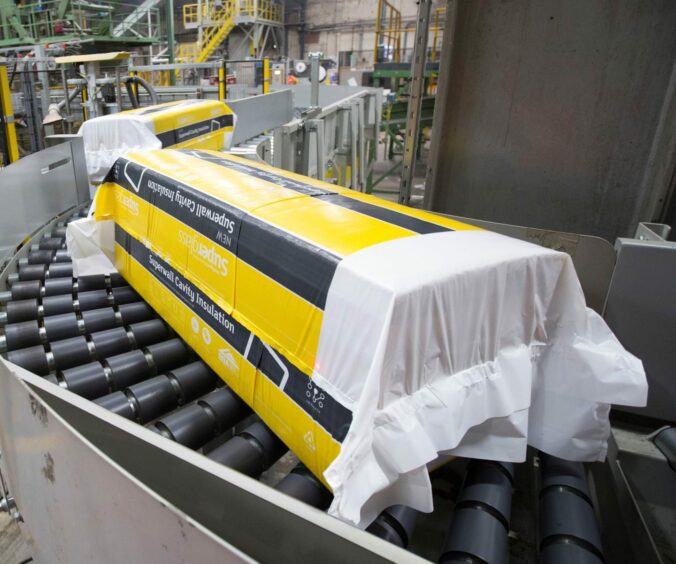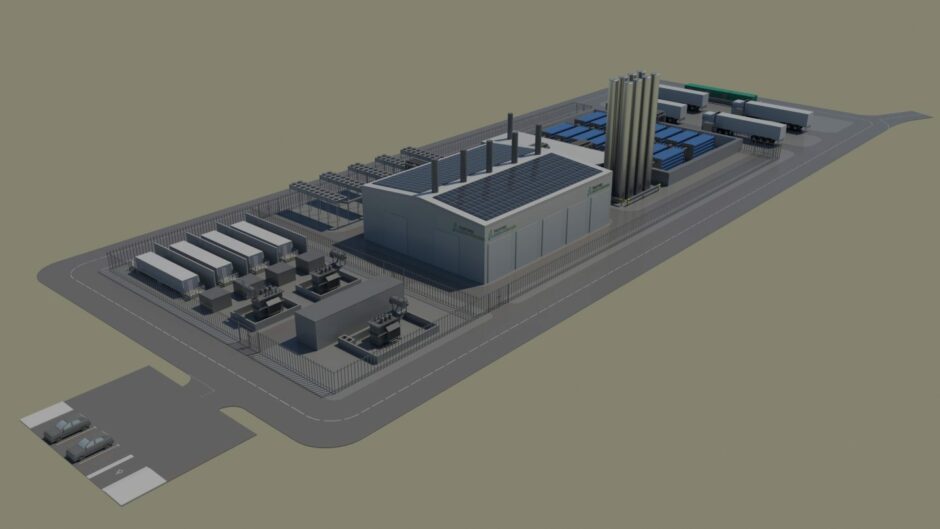
Local manufacturer Superglass will work with the infrastructure developer to evaluate technical and supply elements in support of a proposed green hydrogen facility in Stirling.
Superglass, which makes glass mineral wool insulation, has signed an agreement with Edinburgh and Stokesley-based Carlton Power that would see it supplied it with green hydrogen for its manufacturing facility.
Carlton said demand for clean fuel from the Stirling Green Hydrogen Hub – its first such development in Scotland – would underpin the initial development of a 10MW electrolyser near the central belt city, while cutting the manufacturer’s reliance on natural gas.
The scheme is to be located at Polmaise, close to Superglass’ manufacturing plant on the Thistle Industrial Estate in Stirling. The plant, which completed a £37m upgrade in 2019, produces around 60,000 tonnes of glass wool insulation annually and employs 200 people.
Once built, Carlton expects its facility to produce approximately 1,000 tonnes of green hydrogen every year, though additional capacity could be added as demand from other energy-intensive users in the area expands.
The hydrogen will be produced by an electrolyser using electricity generated from “primarily wind and solar power” the group said.
Subject to planning and final designs, the hub is expected to be similar to Carlton’s three other hydrogen projects which have already been shortlisted to receive government support through the government-backed Hydrogen Business Model and Net Zero Hydrogen Fund.
These include schemes at Trafford in Greater Manchester, Barrow-in-Furness and Langage in Devon.
As with these schemes, the Stirling site would be owned by the Green Hydrogen Energy Company (GHECO), Carlton’s new joint venture company with Schroders Greencoat.
Carlton hydrogen projects director Eric Adams said the firm was “delighted” to be working with Superglass.
“It will help Superglass achieve its sustainability goals and support Scotland’s decarbonisation strategy. It is critical that projects such as this are brought forward to support investment by local companies in their operations that can reduce their carbon emissions,” he added.
Planning consent and a final investment decision (FID) is expected within the next 12-18 months, the firm said.
The partners have however said they would like to see the hub in operation in 2026, though construction remains contingent on securing local planning and financial support from the UK Government.
Superglass and Carlton will work together on various economic, technical, and engineering aspects of the scheme, as well as consultations with local and national stakeholders, including the Scottish Government.
They will also work together to obtain grant funding and operational financial support from the UK Department of Energy Supply and Net Zero (DESNZ) as part of the next Hydrogen Allocation Round.
Superglass chief executive Theresa McLean said: “Carlton Power’s experience in hydrogen and wider energy project development in the UK is first-class, and so we are very pleased to be working with them to develop the Stirling scheme.”
“Superglass’s operations are already very energy efficient – our glass wool insulation is made from up to 84% recycled glass and is estimated to save around 300 times the amount of energy used to manufacture it – but we know that we must do more.”
“We need to make the transition from fossil-based fuels to hydrogen in order to cut our carbon emissions. The Stirling Green Hydrogen scheme will be an important step forward for not only our company, but the community in which we operate.”
Recommended for you

 © Supplied by Carlton Power
© Supplied by Carlton Power